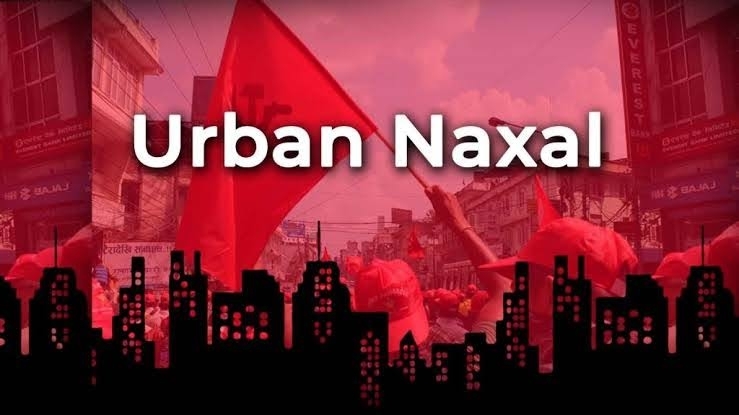Naxalism is Communist Terrorism
Rightly called as Communist-Maoist terrorism, Naxalism has caused more harm than good to the innocent tribal settlements across Bharat. Far from being a legitimate social movement, it today stands exposed as a grave threat to national security of Bharat, exploiting the communities and the regions that fall under its brutal control.
-(1)_202411221129308809_H@@IGHT_360_W@@IDTH_640.jpg)
In the realm of social movements, many causes begin with noble intentions, advocating for justice and equality. History has an abundance of examples where genuine grievances have given rise to powerful movements, transforming societies for the better. However, in the vast landscape of socio-political movements, some entities emerge cloaked in noble intentions but harbor darker agendas beneath their outward façade.
Naxalism, often perceived as a crusade for social justice and the upliftment of the oppressed, is akin to a wolf in sheep's clothing. Beneath it’s guise of righteousness and advocacy for marginalized communities lies a brutal insurgency marked by terror and violence.
While it presents itself as a champion of social justice, the reality is far more sinister-a deceptive facade, a bag full of lies, a brutal insurgency that devastates everyone involved, undermining the very fabric of society it claims to defend.
It stands as a perfect example, a clear case study, for manufacturing a nexus of terror and secession right in the middle of the country's mainland.
Since 1967, Communist terrorism has relied on two main strategies, brute force and infiltration of civil society. This combination, aided by sympathetic media and institutions, constructs a misleading image of a "social justice movement."
By portraying the government as an oppressor and discouraging developmental activities, Naxalites aim to undermine state authority and disrupt progress. This calculated narrative not only obscures their violent agenda but also manipulates public perception, drawing unwarranted support and sympathy.
Brute Force: Cold-Blooded Terror Nexus
The areas under Maoist control experience frequent violence, including attacks on security forces, bombings, and targeted killings of those perceived to be collaborating with the government.
Intimidation tactics are used to maintain control over the populace. Economic activities are severely disrupted. Agricultural productivity falls as farmers are either too scared to tend their fields or are forced to hand over a portion of their produce to Naxalites.

Innocent young minds are coerced into joining Naxal ranks. They are indoctrinated with Maoist ideology and trained in guerrilla warfare. Maoists impose "revolutionary taxes" on local businesses, contractors, and even ordinary citizens. Non-payment often results in severe punishment, including death.
A ruthless parallel administration prevails, throwing the entire region into despair. They set up "kangaroo courts" (Jan Adalats) to dispense their brand of justice, often through summary trials and executions. Their governance is marked by harsh punishments for those who oppose them.
Under the facade of so-called revolution, Naxalism is a bitter extortion and smuggling racket. As per several official and independent records, Naxalism has directly caused more than 20,000 deaths, and unfortunately, the local civilians form a significant share of this death toll. Maoism has claimed more deaths than the death toll suffered by Bharat in its wars against its neighbours.
Civil Society - Urban Naxals
Urban Naxals, in charge of civil society institutions, are responsible for manufacturing an alternate perspective, trying to emotionalize the conflict, and discreetly wiping proofs of the bloodshed caused by their armed comrades. The origins of the term "Urban Naxals" is accredited to filmmaker Vivek Agnihotri's book 'The Making of Buddha in a Traffic Jam (2017)' and a film of the same title.
Urban Naxalism got exposed when a CPI (Maoist) document titled ‘Urban Perspective: Our Work in Urban Areas’ (in 2004) explained the Urban Naxalism strategy.

It emphasized mobilizing urban poor people and industrial workers, establishing front organizations, building ‘tactical united fronts’ of like-minded organizations and elaborating on gaining leadership and expertise from their connections. Working in the name of students' groups, charitable trusts, press freedom groups, media organizations, environmentalists, etc., Urban Naxals formed a strong foothold into the 'system' of this country.
They have infiltrated deep into government institutions, universities, political parties, the Judiciary, bureaucracy, and even spread in foreign countries.
Arundhati Roy's book 'Walking with the Comrades (2011)' and her essays under 'Broken Republic (2011)' are the textbook examples of the sympathy generating strategies of the Urban Naxals. Literary works like these attempts to clean the Maoist image and portray them as victims of government oppression or capitalist corporatism.
The Government has blamed Urban Naxals for causing barriers in every development project, often hindering the advancements in the name of environmental issues. This trend has been regularly observed over the years, with every major infrastructure plan getting stayed by Court orders, leagues of PILs filed against them, and demonstrations using very creative measures.
Anti-National Collaboration
Enemies of Bharat have found new means to destabilize the country. This has resulted into a deadly collaboration which also encompasses Naxalism. Urban Naxalism merges with Jihadi extremism, which is quite ironic since Communism claims to be an atheistic ideology.
However, this combination together supports the separatism in Jammu and Kashmir and other parts of Bharat. Separatists play the game of terror, while the Urban Naxals conveniently downplay it as a freedom struggle.
Maoist ideas are reverberated at institutions like the Oxford University, Harvard University, etc. in an attempt to externally pressurize the government.
Conclusion
The Central Government has shown significant efforts towards combating Communist terrorism. In the recent times, hundreds of Naxalites-Maoists have been neutralized, or forced to surrender. Rapid infrastructure development and subsidies in the ex-Maoist areas is a relief to the local people, offering them a chance to recover from the wounds of Naxalism. However, we are yet to liberate several districts!
Also, there is enough scope for improvement on the Urban Naxal front. Although the Government's restrictions on foreign funding through amendments in the FCRA Act have significantly reduced the funding and extortion nexus, there are other ways through which the Maoists still get adequately funded.
With this, the citizens of Bharat will also have to play a role to combat Urban Naxals. Universities shall remain as places of education and innovation, and not political activism. If citizens choose not to fall prey to the media narratives, the Urban Naxal nexus could be easily dismantled.
Article by
Mohit Mandar Joshi
Younginker
Thane, Maharashtra, Bharat


